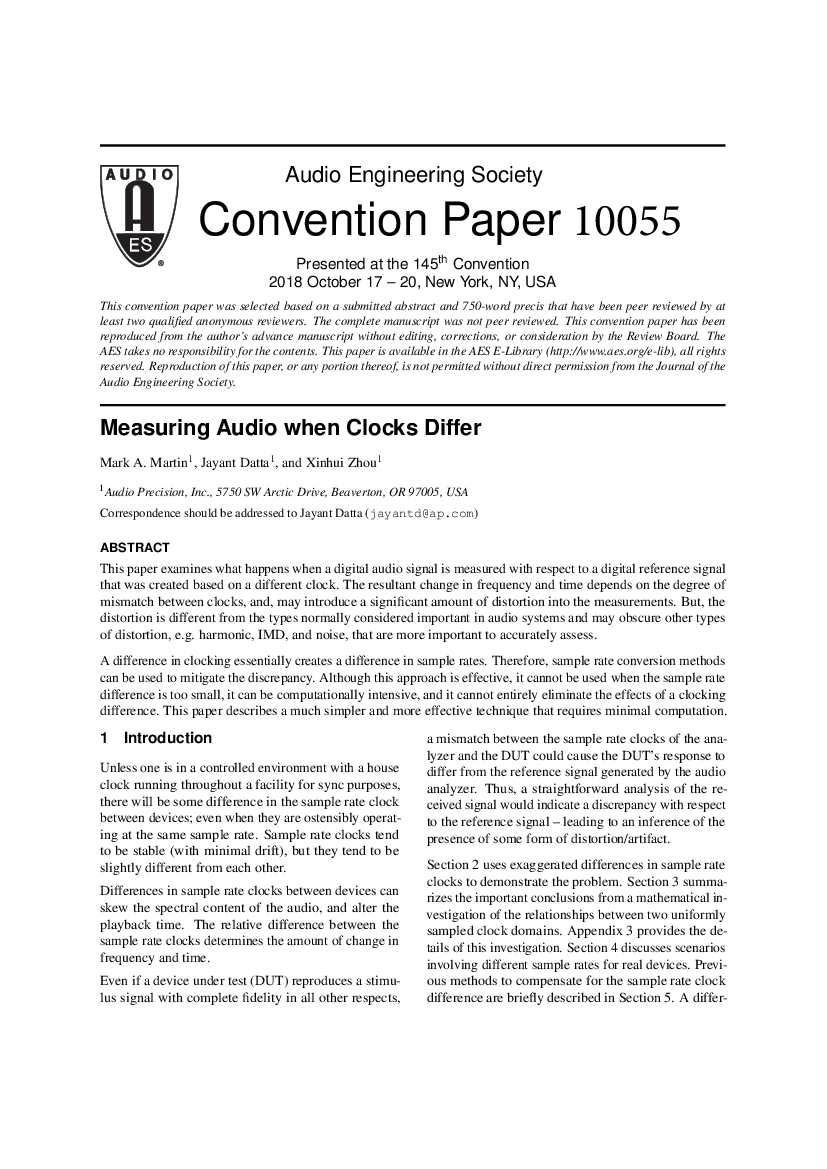Home / Publications / E-library page
You are currently logged in as an
Institutional Subscriber.
If you would like to logout,
please click on the button below.
Home / Publications / E-library page
Only AES members and Institutional Journal Subscribers can download
This paper examines what happens when a digital audio signal is measured with respect to a digital reference signal that was created based on a different clock. The resultant change in frequency and time depends on the degree of mismatch between clocks and may introduce a significant amount of distortion into the measurements. But the distortion is different from the types normally considered important in audio systems and may obscure other types of distortion, e.g., harmonic, IMD, and noise, that are more important to accurately assess. A difference in clocking essentially creates a difference in sample rates. Therefore, sample rate conversion methods can be used to mitigate the discrepancy. Although this approach is effective, it cannot be used when the sample rate difference is too small, it can be computationally intensive, and it cannot entirely eliminate the effects of a clocking difference. This paper describes a much simpler and more effective technique that requires minimal computation.
Author (s): Martin, Mark; Datta, Jayant; Zhou, Xinhui
Affiliation:
Audio Precision, Beaverton, OR, USA
(See document for exact affiliation information.)
AES Convention: 145
Paper Number:10055
Publication Date:
2018-10-06
Import into BibTeX
Session subject:
Signal Processing—Part 2
Permalink: https://aes2.org/publications/elibrary-page/?id=19781
(714KB)
Click to purchase paper as a non-member or login as an AES member. If your company or school subscribes to the E-Library then switch to the institutional version. If you are not an AES member Join the AES. If you need to check your member status, login to the Member Portal.

Martin, Mark; Datta, Jayant; Zhou, Xinhui; 2018; Measuring Audio when Clocks Differ [PDF]; Audio Precision, Beaverton, OR, USA; Paper 10055; Available from: https://aes2.org/publications/elibrary-page/?id=19781
Martin, Mark; Datta, Jayant; Zhou, Xinhui; Measuring Audio when Clocks Differ [PDF]; Audio Precision, Beaverton, OR, USA; Paper 10055; 2018 Available: https://aes2.org/publications/elibrary-page/?id=19781